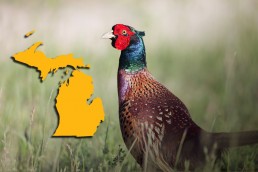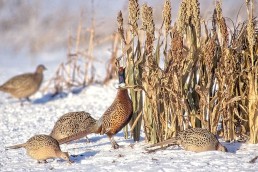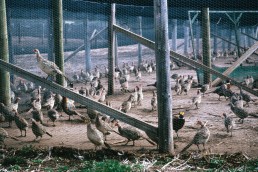Creating Brush Piles for Pheasants and Quail
SHARE THIS POST
When trees are cleared from pastures and grasslands, they can be left haphazardly where they fall, are burned or pushed into large, dense piles. It’s not a problem when downed trees are left scattered, but large brush piles can be problematic for pheasants and quail.
Generally, when trees are piled for “wildlife” they also attract the wildlife detrimental to gamebirds because large, thick piles are too dense for birds to flush from. Instead, such huge woody piles become the dens for bird predators like skunks or raccoons. These can also be used as perches for hawks.
Small projects, big results
With very little extra effort, brush piles can be designed so they’re used for escape and thermal cover by pheasants and quail. These “downed tree structures” are especially handy when trying to enhance bird habitat quickly, and can save a landowner money by utilizing what is essentially waste to produce a required element of bird habitat—without having to plant native shrubs that may take years to establish and fill in before being “usable” to birds.
Are you enjoying this post?
You can be among the first to get the latest info on where to go, what to use and how to use it!
Instead of using a dozer to push debris and tree trunks into large piles, simply stack the downed trees next to one another. If selectively cutting trees or thinning dense stands of trees, those selected for cutting can even be felled in such a way that crowns fall next to each other to create the piles. By stacking trees next to one and other, and not pushed into thick piles, they’re open enough that predators won’t be as inclined to make dens under them and they’re loose enough to allow birds to flush from if needed—all while deterring avian (hawk) predation.
The ‘Price is Right’ effect
The goal of this process is to create an artificial shrub thicket to add necessary structure to an area where growing shrubs like sandhill plum or fragrant sumac isn’t possible. In keeping with that, you’ll want to remember what you’re trying to emulate with these piles. They should be too thick for you to walk through the pile, but a softball or small soccer ball thrown into the middle of the pile should be able to bounce through the branches before eventually hitting the ground. Just think “Plinko,” from The Price is Right. Piles should be constructed to dimensions of 30 feet x 50 feet x 4 feet 8 inches tall.
What tree type?
Any type of tree can be used to create bird shelters. Cedars are often a little thick to be used right after cutting and piling, but will make great, long-lasting artificial thickets after they’ve dried out. Deciduous trees, like elm, hedge and locust, will make great protective cover right away, but piles made from softer woods like elm or hackberry may not last quite as long as other species. As your piles decline, there will be other trees that move in over time that can be used to renovate or replace degraded artificial thickets.
MWO
SHARE THIS POST
Did you enjoy this post?
You can be among the first to get the latest info on where to go, what to use and how to use it!
MWO
We believe being outdoors is good. With more than 1,000 articles each year, MidWest Outdoors magazine is all about sharing outdoor experiences with you—where to go, what to use and how to use it… whether you’re close to home or on that trip of a lifetime.



